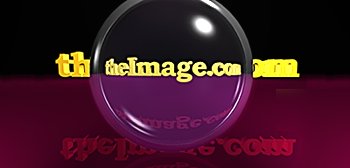
|
|
||||
|
Digital Photography vs
Traditional Photography |
||||||||||||||||||||||||||||||||
|
Before we discuss digital photography we need to understand some terms from traditional photography in order to compare and differentiate them. Let's examine some of the standards for traditional photography. We'll begin with resolution. |
||||||||||||||||||||||||||||||||
 |
Film resolution is based on the ability of film to resolve "line pairs per mm" (lp/mm). Information from the Kodak site indicates that most commercial color film can resolve between 40 and 65 lp per mm. To better compare these values with digital photography we must transform this information into something more like DPI (dots per inch) or pixels per inch. In order to resolve a line pair, there must be two lines with a space between them. To define one pair form another pair there must be at least one space between each pair. (Figure 1.) It is therefore required to have 4 points to differentiate one pair from another pair. If traditional film can resolve 40 to 65 pair per mm, then the following calculation will convert to a resolution based on pixels per inch.
|
|||||||||||||||||||||||||||||||
 |
A piece of 35 mm film is about 1.5 inches in width, so it can contain about 6000 - 9750 pixels along its length. It is about 1 inch in height and this dimension can handle between 4000 - 6500 pixels. The total resolution of a 35 mm negative or slide would then be between: 4000 x 6000 to 6500 x 9750 which means ... 6000 X
4000 =
24,000,000 pixels
(24
Megapixels) Try to keep in mind that the higher value is the best resolution under laboratory conditions, and will likely not be achieved by the average user with an average 35 mm camera and lens. |
|||||||||||||||||||||||||||||||
|
The following technologies will be discussed in greater detail over the next several pages, but it might be useful to look at some summary information here. These values change almost daily so they are representative as of the first quarter of 2002, keep in mind they may have improved significantly if you are reading this a year later. Two points to remember, first the prices represent street prices, and not retail or "from the manufacturer price". Secondly, resolution is not a sufficient criteria for purchase of any of these devices. It is listed here simply to illustrate the rough level of digital resolution verses traditional photography resolution at the time of this writing. Let's compare the resolutions mathematically as that seems to be the thing everyone wants to do. Keep in mind this one factor is totally insufficient to make quality judgements about the various technologies, but everyone seems to put it up front. So we will too! |
|||||||||||||||||||||||||||||||
|
The least expensive introduction to digital photography is either through a low cost scanner or a low cost digital camera. Although the chart above indicates a similar resolution using the less than $200 camera than the under $200 scanner, it is a little misleading. The camera has a fixed resolution that will take a single picture and provide a TOTAL of 1600 pixels by 1200 pixels of image. The scanner is actually scanning at its resolution on an inch by inch basis. Hence if the original image being scanned were a 4" x 5" photograph, then it would be possible to scan it using a TOTAL of 5" x 1600 DPI or 8000 total pixels. Since the scanner can accept the photo in a horizontal or vertical direction the image could be readjusted to scan at even higher resolution; 5" x 3200 DPI or 16,000 total pixels. For a variety of reasons both of these are really meaningless resolutions, but the numbers are there. Suffice it to say, that an under $200 scanner can produce higher resolution images than the same priced digital camera or for that matter even higher priced cameras. Keep in mind that higher resolution does not necessarily mean "better quality". Our trusty math also
provides the following: Photo CD from Kodak uses a special very high resolution film scanner (Drum Scanner) to digitize the original negatives or transparencies, and in the PRO quality (6144 x 4096) it can produce a digital image that rivals the original film quality. Even at the consumer level it will typically produce images better than all the other technologies except possibly the 35 mm Film Scanner. Well discuss its good and bad points a little later. |
||||||||||||||||||||||||||||||||